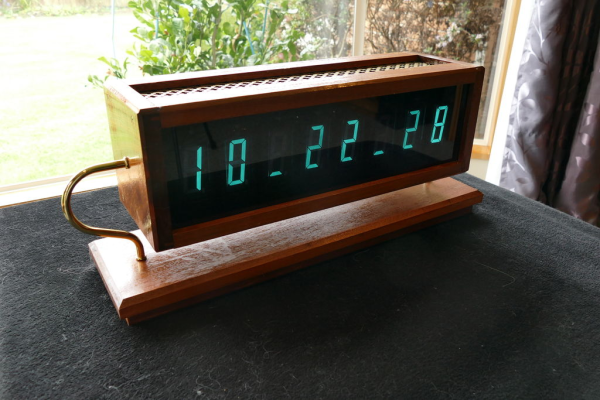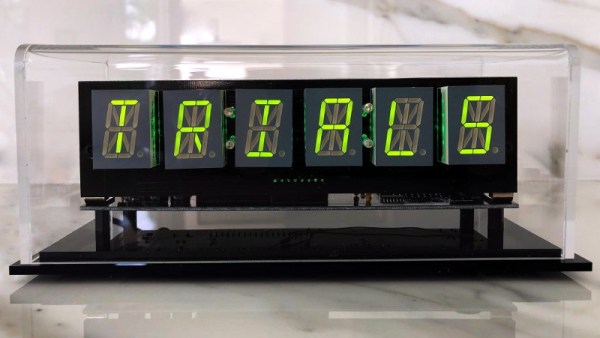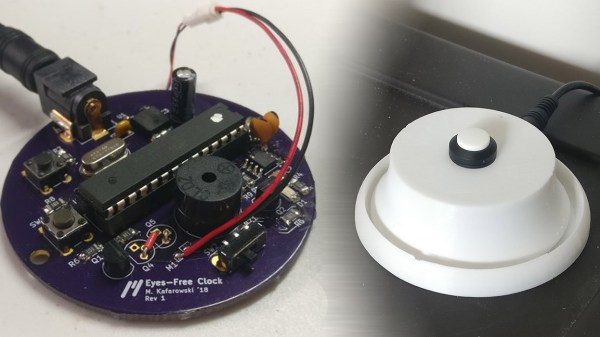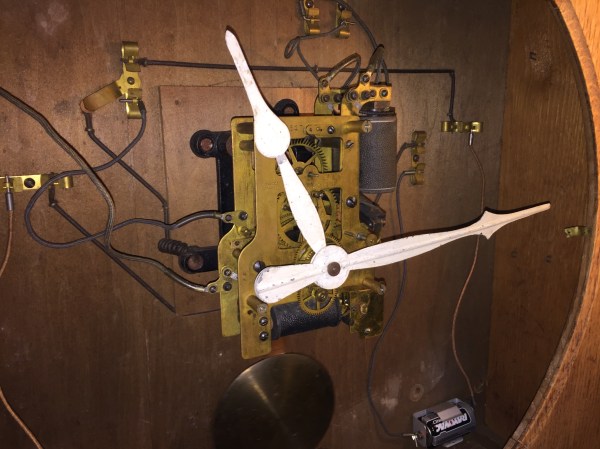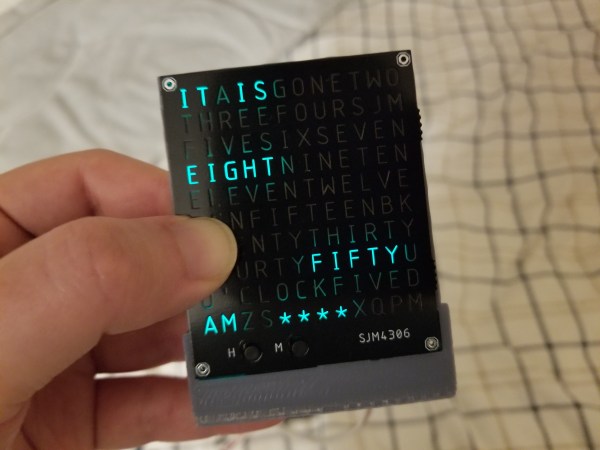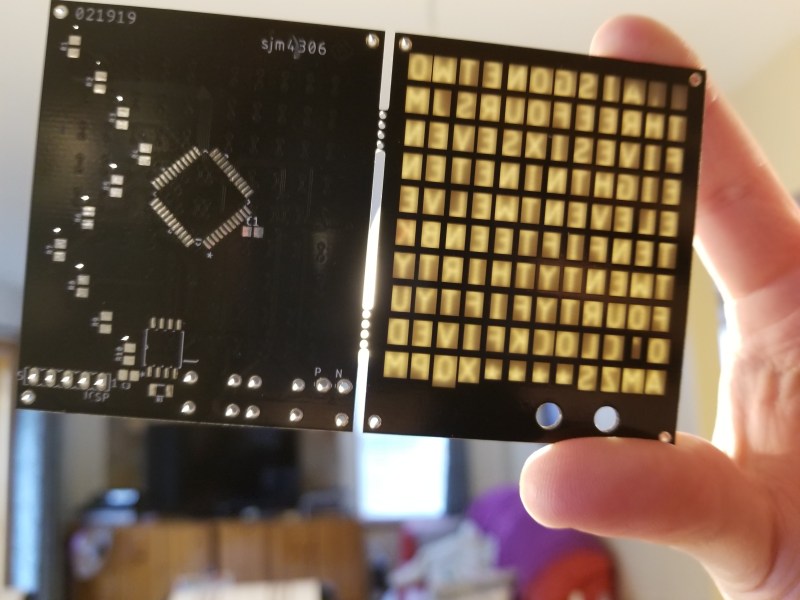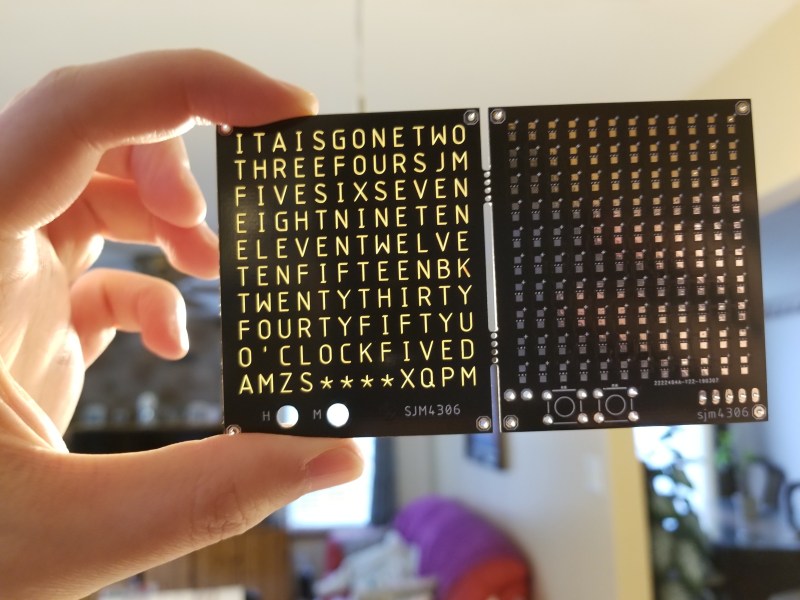Time is probably our most important social construct. Our perception of passing time changes with everything we do, and when it comes down to it, time is all we really have. You can choose to use it wisely, or sit back and watch it go by. If you want to do both, build a clock like this one, and spectate in sleek, sophisticated style.
[ChristineNZ]’s mid-century-meets-steampunk clock uses eight ILC1-1/8Ls, which are quite possibly the largest VFD tubes ever produced (and still available as new-old stock). In addition to the time, it displays the date, relative humidity, and temperature in both Celsius and Fahrenheit. A delightful chime sounds every fifteen minutes to remind you that time’s a-wastin’.
The seconds slip by in HH/MM/SS format, each division separated by a tube dedicated to dancing the time away. The mesmerizing display is driven by an Arduino Mega and a MAX6921 VFD driver, and built into a mahogany frame. There isn’t a single PCB in sight except for the Mega — all the VFDs are mounted on wood and everything is wired point-to-point. Sweep past the break to see the progressive slideshow build video that ends with a demo of all the functions.
Those glowing blue-green displays aren’t limited to clocking time. They can replace LCDs, or be scrolling marquees.
Continue reading “Captivating Clock Tells Time With Tall Tubes”

